Continuation from the previous article.
– What was the starting point in putting together the proposal?
Tadahiko Murao (Executive Officer, Principal, Global Design Group,Nikken Sekkei): Among the important keywords in the workshops provided by the FC Barcelona officials, the one that stuck with us the most was the word “democratic.” They told us that FC Barcelona is operated by “Socios,” which is what makes it democratic. Because I had never been asked for “democratic architecture” in Japan up until now, I was very moved.
– You certainly don’t hear that often in Japanese architecture today.
Murao: They are serious about it. Even though there is a roof only over the top of the main stand at this moment, rich, not-so-rich, tourists, and locals, people cheer all together for FC Barcelona on the pitch once they come to this stadium. They wanted to create a stadium where people could feel that sense of unity. What was important to them was the roof—the roof is a symbol of democracy that creates a sense of unity.
Considering what they said, we decided to make a roof that covers the same cross-section wherever the cross-section is. People will be under the same roof wherever they look up from. That would be democracy.
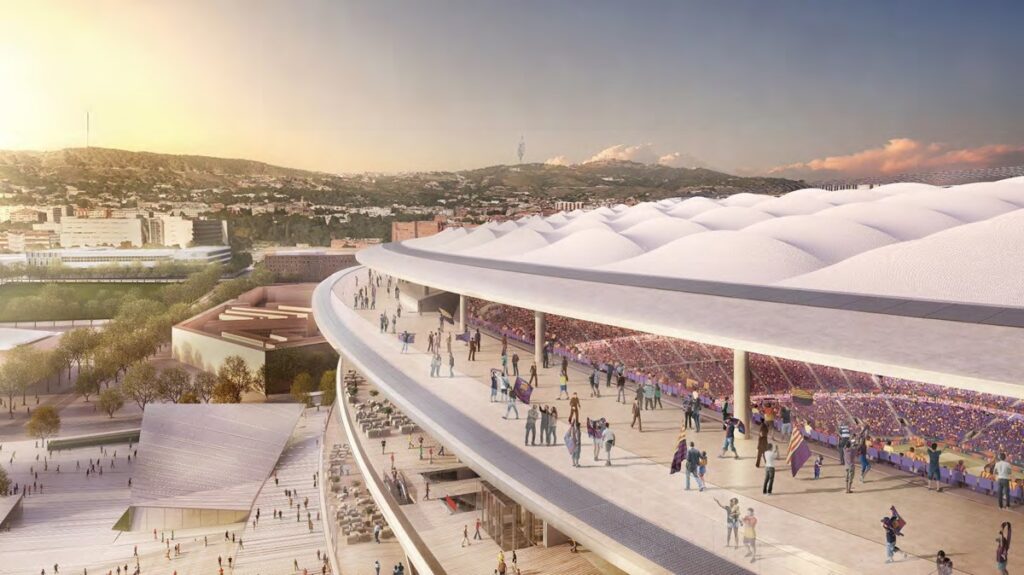

– How about the concourse that features its exterior?
Murao: In the competition guidelines, the conceptual drawing showed a cross-section of the stadium with a soft facade on the outermost part of the stadium. We felt uncomfortable with that. Despite our discomfort, we all drew various sketches of the facade.

But none of them felt right. As we worked on the project, we began to talk about whether the facade is really necessary. Since Barcelona faces the Mediterranean Sea, it is quite warm even in winter. Therefore, it would be a waste to spend money on the facade. We suggested adding a 20-meter-wide balcony on three stories, extending outward from the columns of the existing structure, instead of spending money on the facade. An open balcony would not only help the flow of people during games but also serve as a place for people to meet and relax. It also contributes to a business if concessions are placed here. We proposed that three levels of open and pleasant balconies would make the entire stadium function as a park or a public space. The balconies themselves with 100,000 visible spectators become the facade of the stadium.
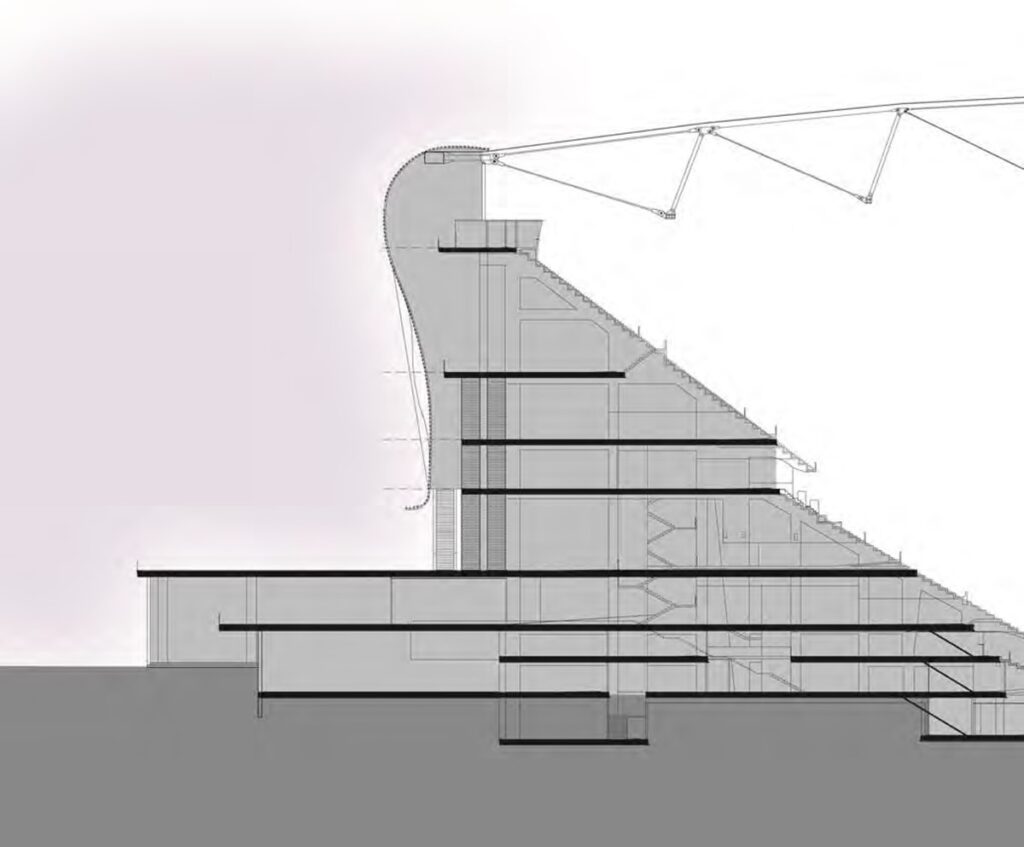

–So the proposal is different from the image in the brief?
Yes. There was another key proposal as a set with the exterior, which was also different from the requirements. It is a series of 12 cores. The stairs, elevators, escalators, and equipment shafts are all in one core. We thought it would be a good idea to build these in the first phase of construction.
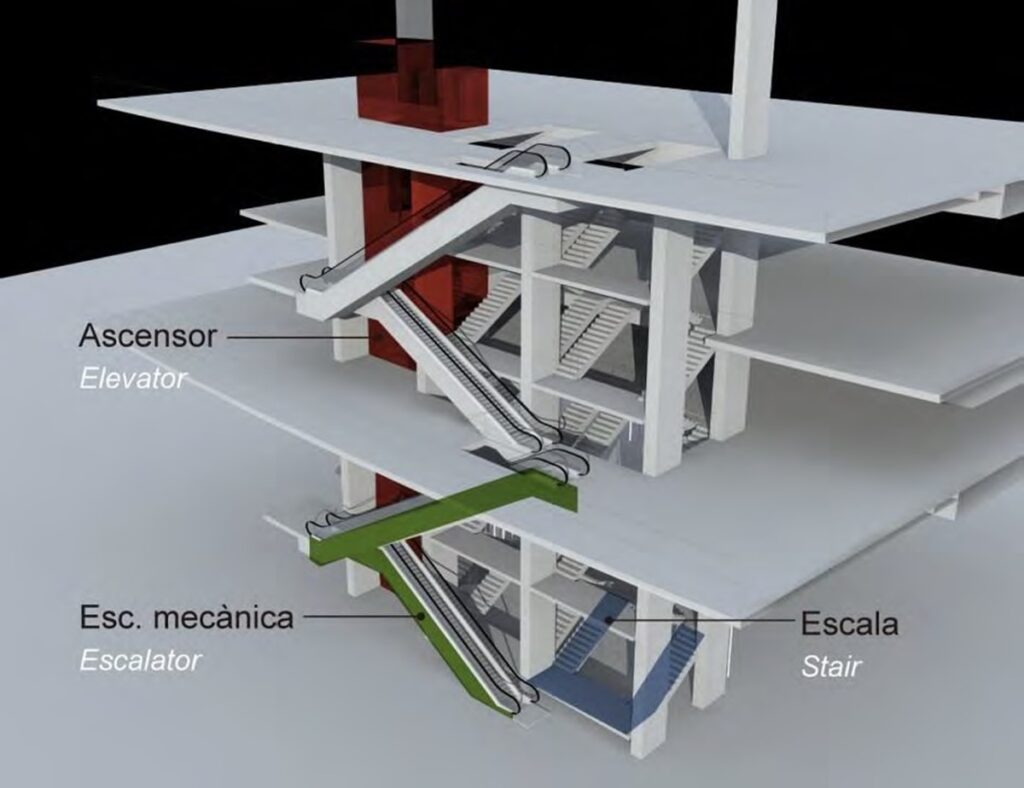
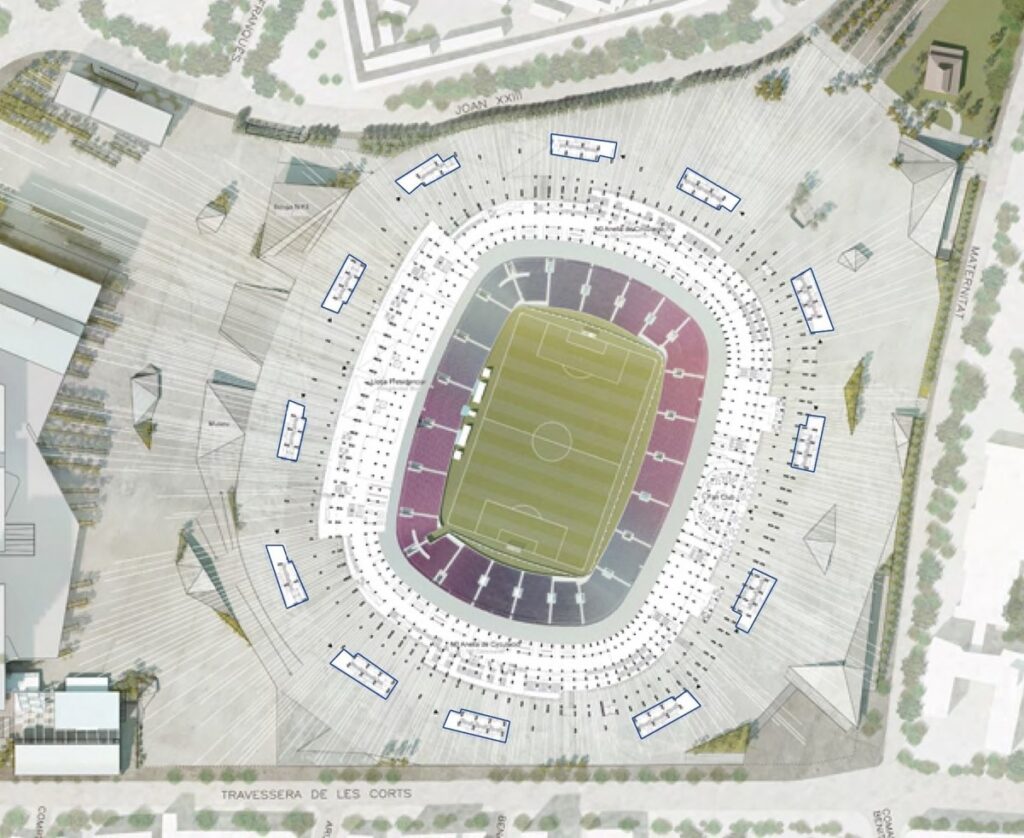
The competition guidelines included a picture of a pedestrian deck, called an amoeba, that circles the second-floor level of the stadium perimeter. The idea was to bring people up to the second floor and then move them around. However, when we ran a simulation, we found that a spacious balcony and the 12 cores would create less congestion for people to move through. This would be less expensive than building a large deck as well.


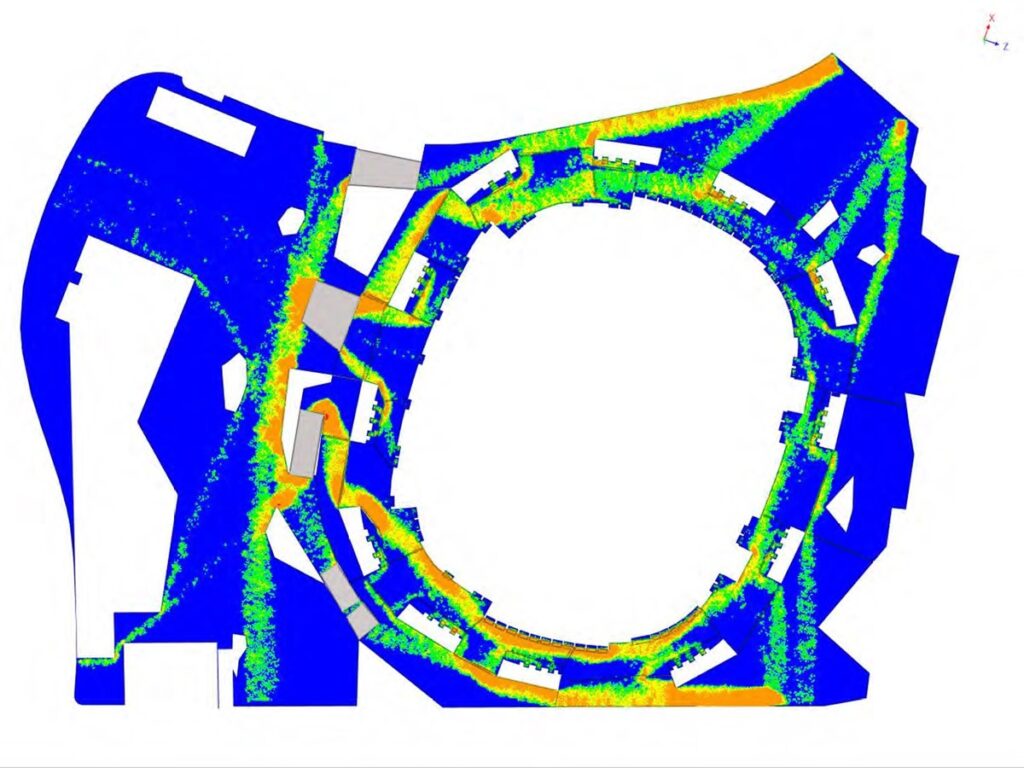
– This simulation was performed by Nikken Sekkei in-house?
Murao: No. We had the simulation done by a company called Momentum in the UK. Even though we could do the simulation in-house, we thought it would be more credible than having Nikken Sekkei do it ourselves. It was a shock to them as well. FC Barcelona had to ask us, “Are you sure about that?”
By the way, as to why we decided on 12 cores, we were thinking of 6 or 8 at first. But then, we thought that “football is played by 11 people, and we should add the supporters to make it 12.” Because all the members of the design team said it was a good number, we tried on 12. As a result, the flow of the people improved very much.
By building the 12 cores in the first phase of construction, the vertical circulation of the stadium can be established. It solves the difficult issue of seating 80,000 people during the construction. In addition, the diagonally cut balcony shape, which inherits the memory of the existing roof shape, allows light to enter the concourse, as well as the wind to flow. The wind flow will also have a positive effect on the growth of the turf on the pitch. The open balcony solves several difficult issues while further making it a fun place to be.
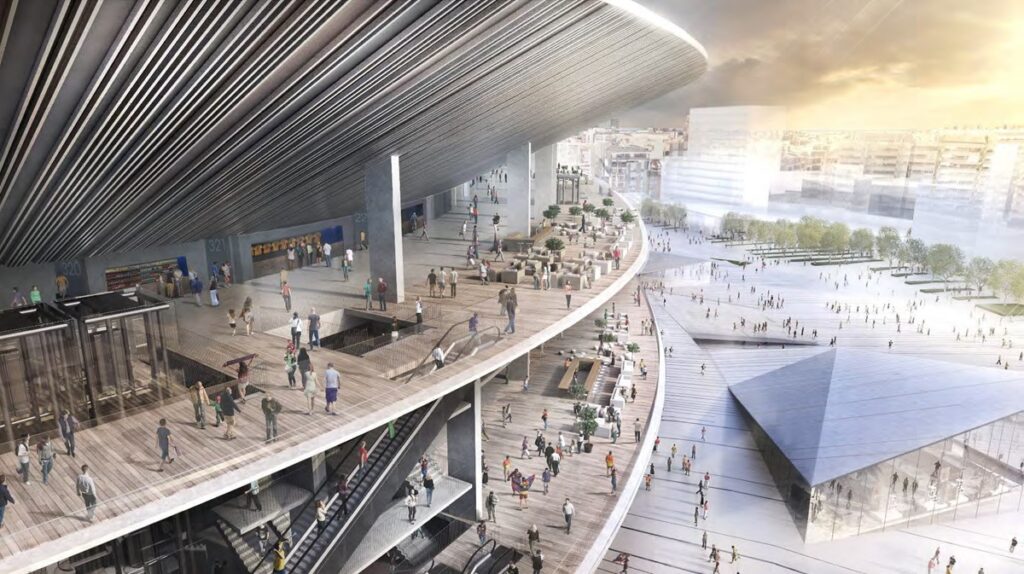
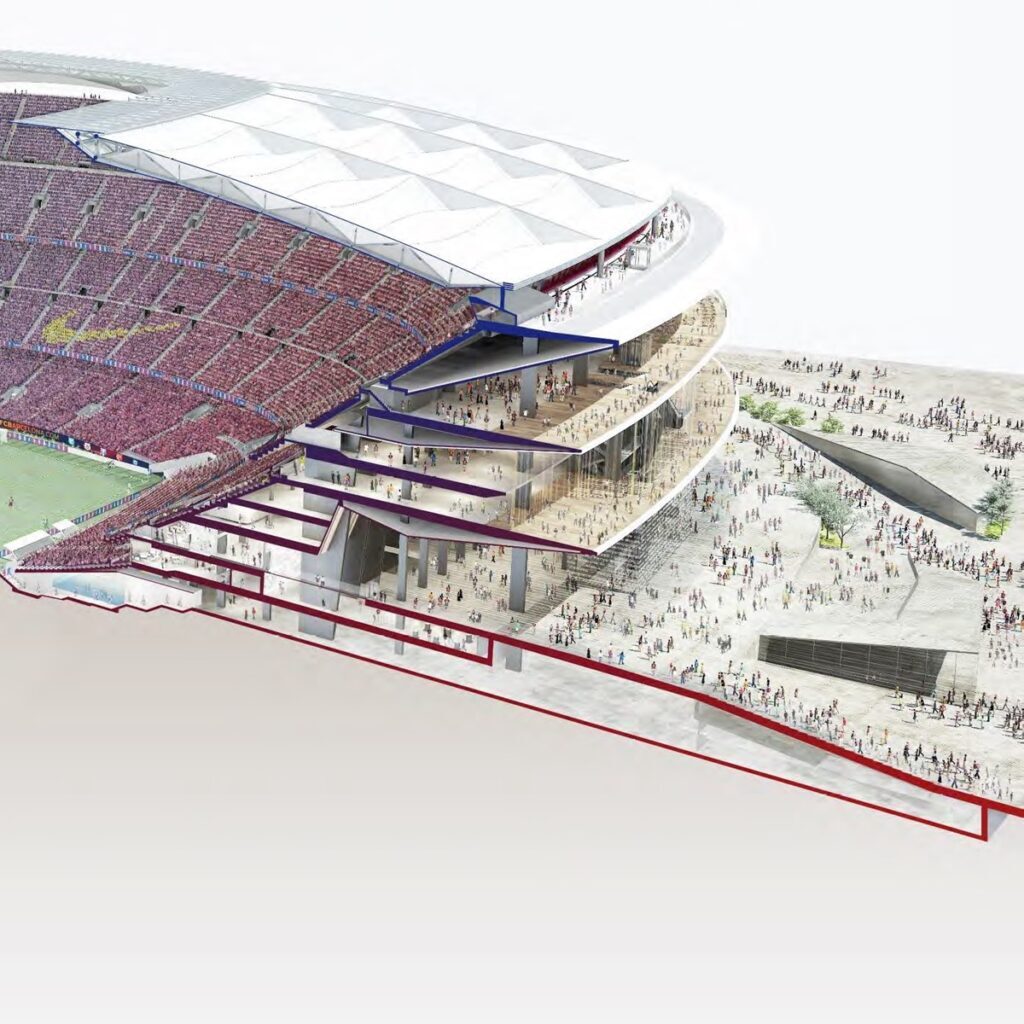
– So you were selected with this unique proposal (the result was announced on March 8, 2016).
Murao: Yes. It is something we were able to propose, because of our position that we had nothing to lose.
To be continued (design development).
